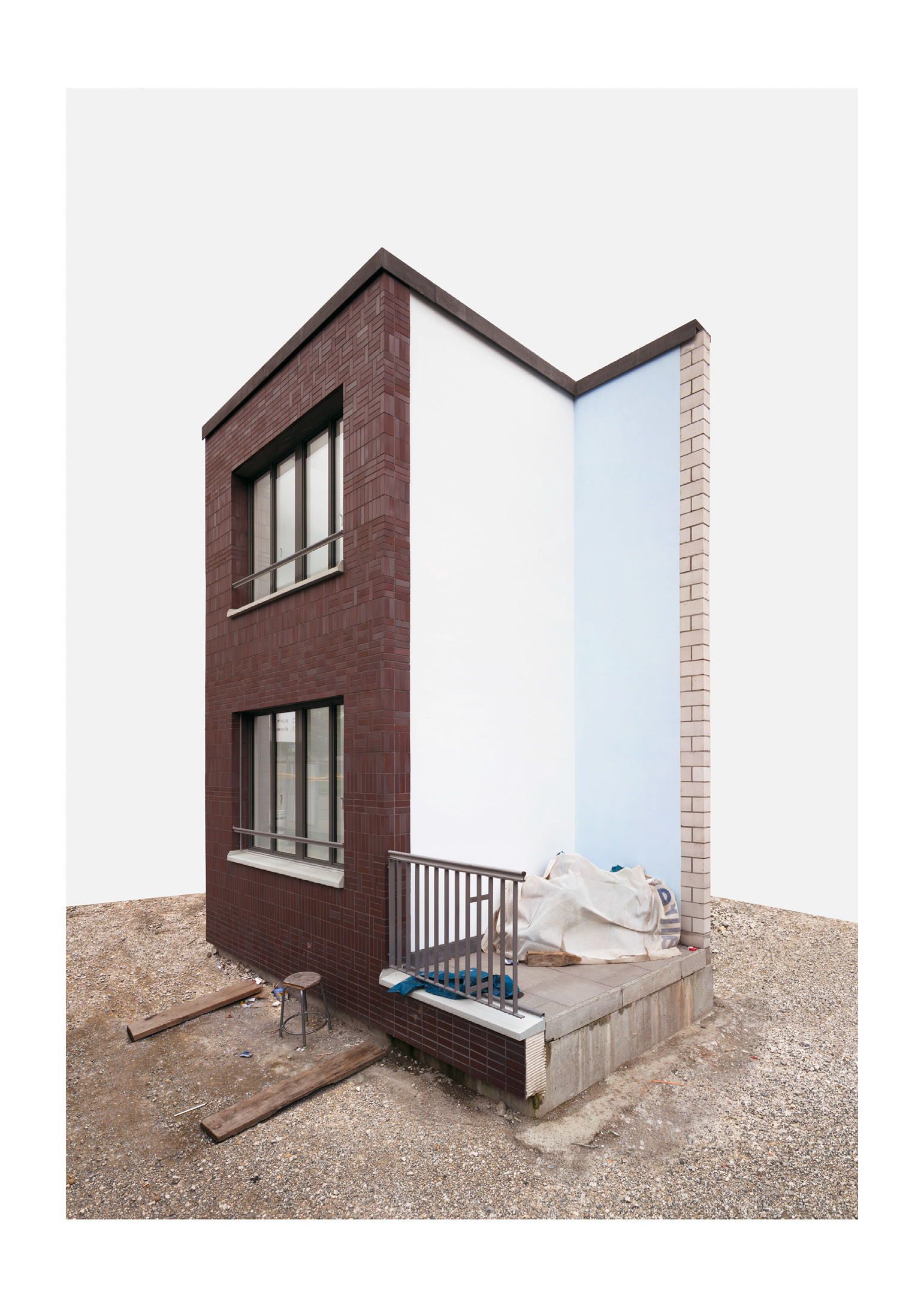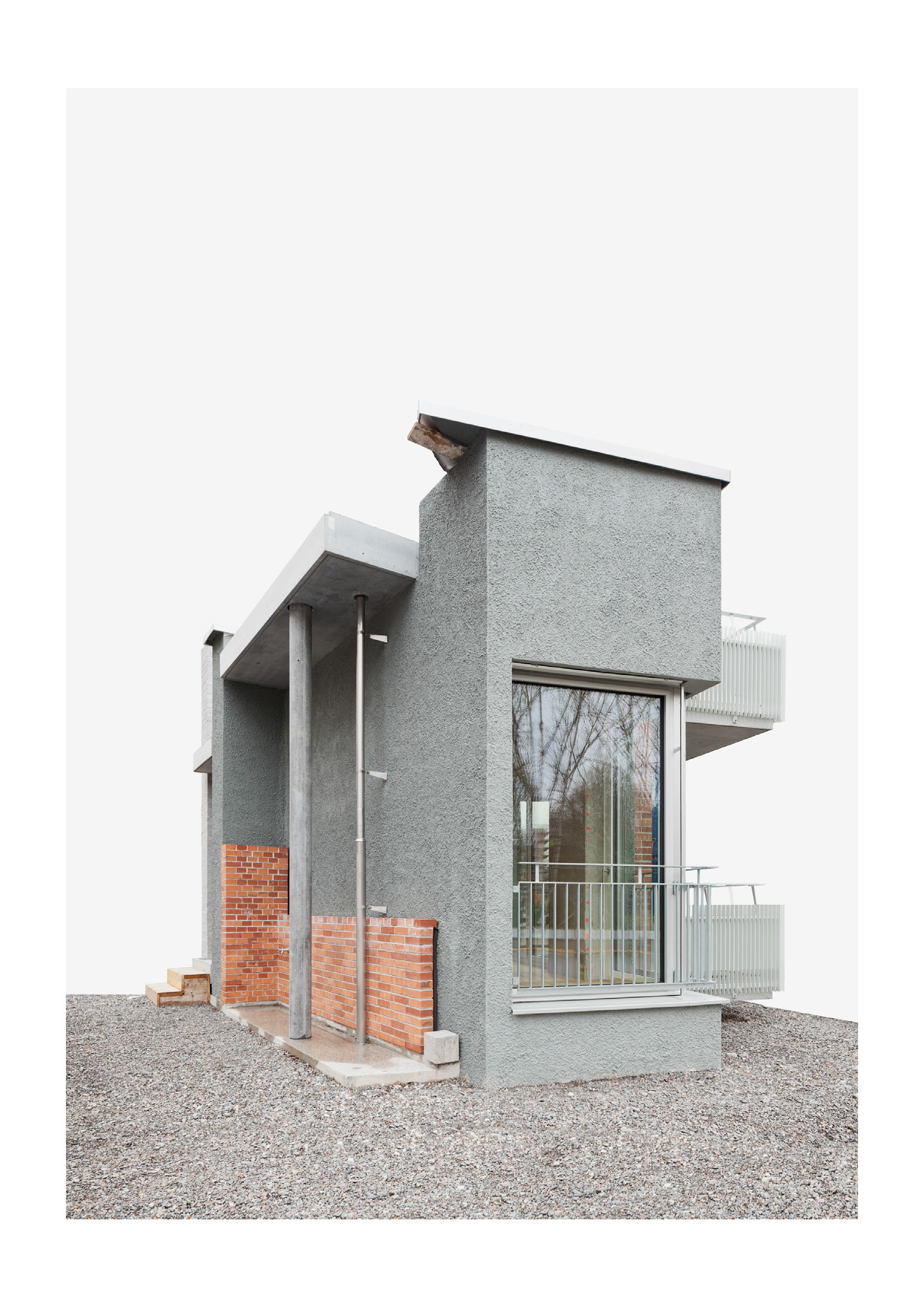The Mockup Series at Art Altstetten Albisrieden, Public Art Festival 2015
instalation on posterboards, 90 x 130 cm and 180 x 130 cm
In 2015 a selection from The Mockup Series was shown on advertising boards on the Fassade of the F+F School for Art and Desgin, Zürich
Text for the Catalogue by Ferial Nadja Karrasch
In architecture, mockups are 1:1 models, realistic sections of a new building, with which the interplay of surfaces and forms is tested fragmentarily; mockups facilitate assessment of the subsequent building’s impact within its immediate environment. While the prototype facades, in their original function, are thus bound to a specific location and a precisely defined task, in Wootton’s works they become placeless, abstract, sometimes seemingly absurd objects, which, taken out of their context, withhold all information from us regarding function, location and proportions. This disorientation on the part of the observer, brought about by the lack of any scale-denying point of reference, is an essential aspect of the artistic working method practiced by Karlsruhe-based Tobias Wootton (b. 1981, Germany). The sections of the reality recorded by Wootton come across as so staged and artificial, that looking through the camera lens becomes an act of defamiliarisation – and even the question of whether this is a depiction of a real existing location or of a model, cannot be answered offhand.
Wootton's photographs always play with monumentality and miniature, concretion and abstraction, reality and fiction. In the case of Mockups, the reality/fiction issue has a twofold role: the models are pledges, pre-emptions of a future structural situation that is still unreal – but in the photographs, they become “found objects” that have been transferred from the public space into an abstract visual space. They become reversible images that shift between model and reality. In the photographs of the indicated “interior space”, the defamiliarisation is taken even further. While the exterior views allow the functions of the individual elements to be identified, the black-and-white images of the “interior spaces” provide no such information. The various surfaces and forms become an almost painterly composition. Here, the categories of space and non-space, or interior and exterior, merge. Exhibited in the format of an advertising poster, the Mockup series comments on the urbanistic transition taking place in Zurich, which also always involves a change within the local social fabric.















